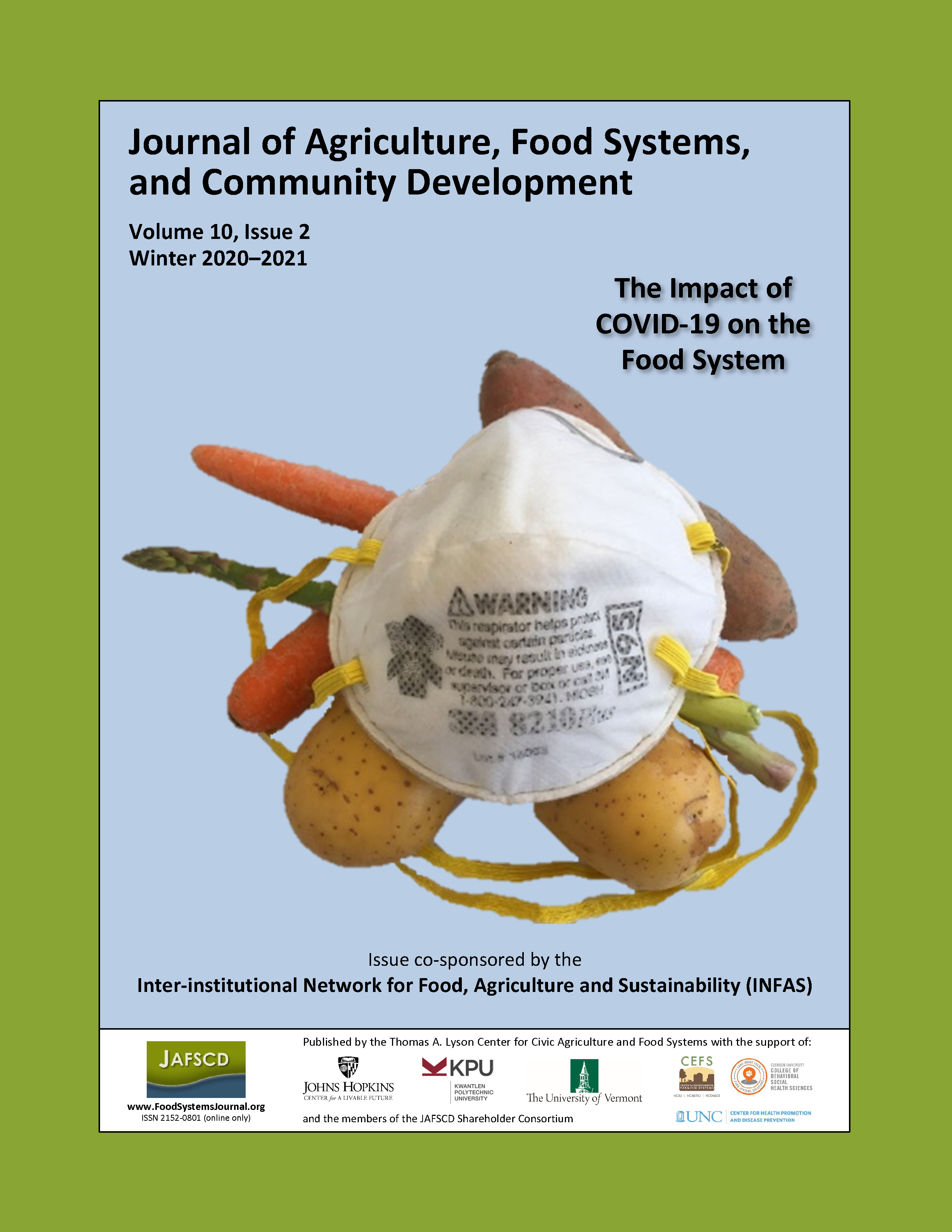Universal free school meals through the Community Eligibility Provision
Maryland food service provider perspectives
DOI:
https://doi.org/10.5304/jafscd.2021.102.033
Keywords:
Community Eligibility Provision, Food Waste, Implementation Science, Nutrition Policy, School Meals, Universal Free Meals, Wasted FoodAbstract
Since 2014, the Community Eligibility Provision (CEP) school meal funding option has enabled high-poverty schools nationwide to serve universal free breakfast and lunch. Evidence suggests that CEP has benefits for student meal participation, behavior, and academic performance. This qualitative study explores perspectives among food service staff (n=28) in CEP-participating school districts in Maryland on (1) implementation barriers, (2) implementation best practices, and (3) impacts on students, school operations, and the broader food system. Perceived benefits of CEP include increased meal participation, reduced student stigma and financial stress among parents, and improved staff morale. Most participants did not report any change in wasted food or relationships with local or regional farms associated with CEP adoption. Implementation barriers, including concerns regarding CEP’s impact on federal, state, and grant education funding, provide insight into potential policy interventions that may promote uptake. Best practices, including strong communication with parents and creative strategies to boost student meal participation, can be adopted by other districts.
Metrics
Downloads
Published
How to Cite
Issue
Section
License
The copyright to all content published in JAFSCD belongs to the author(s). It is licensed as CC BY 4.0. This license determines how you may reprint, copy, distribute, or otherwise share JAFSCD content.














